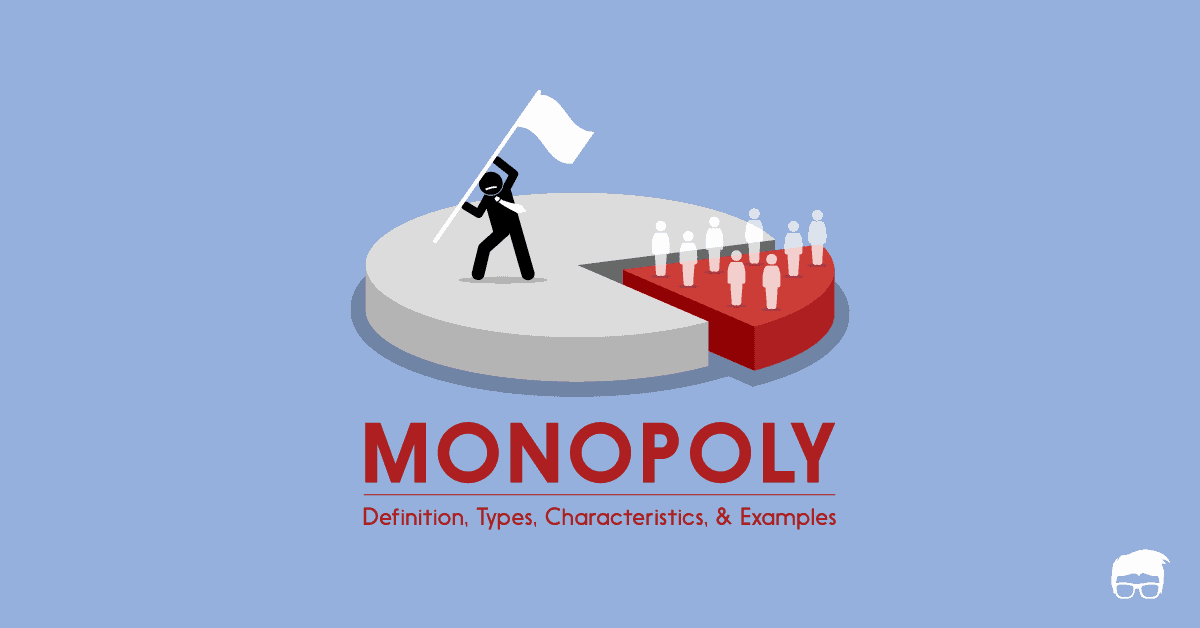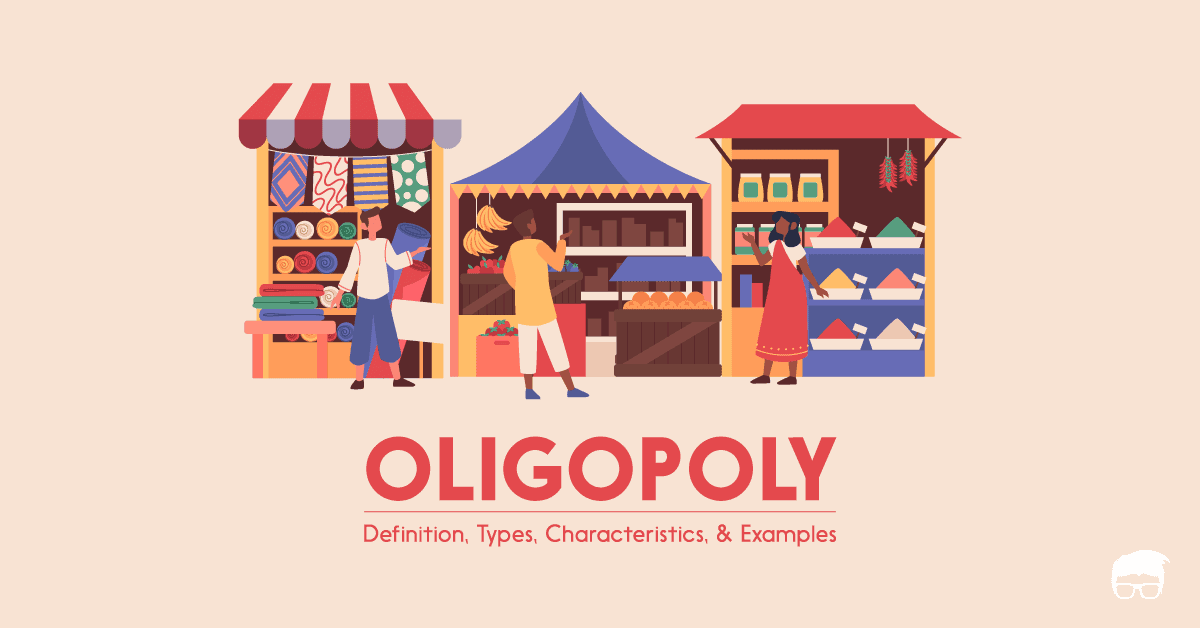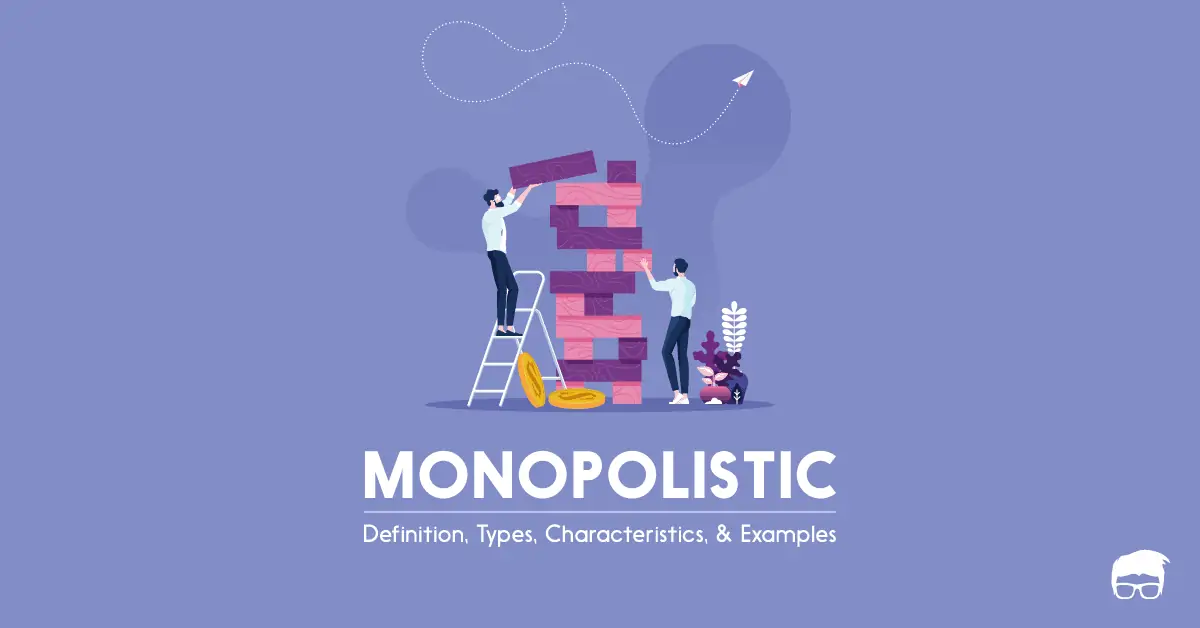Economies around the world witness a combination of different market structures. While there’s a lot of competition in most industries, some industries witness just one seller. There exists no competition in such industries as there are virtually no other players. Such market structures are termed as monopolies.
But what exactly is a monopoly and how does it work?
Let’s find out.
What is a monopoly?
A monopoly is a market structure that consists of a single seller who has exclusive control over a commodity or service.
The word mono means single or one and the prefix polein finds its roots in Greek, meaning “to sell”. Hence, the word monopoly literally translates to single seller.
To understand the concept better, let’s break the definition into three key-phrases –
- Market structure: A market structure is how a market is organised. It explains the competition in the market and how different players are connected to each other.
- Single seller: A single seller is the key characteristic of a monopoly. This means that only a single seller is solely responsible for the production of output of a certain good.
- Exclusive control: Exclusive control, in this context, is the power an entity has over the production and selling of the concerned offering.
Characteristics of a monopoly
A monopoly displays characteristics that are different from other market structures. These characteristics are as follows:
- Single seller – A single seller has total control over the production, and selling of a specific offering. This also means that the seller has no competition and holds the entire market share of the offering that it deals in.
- No close substitutes – The monopolist produces a product or service that has no similar or close substitute.
- Barriers to entry – In a monopoly market structure, new firms cannot enter the industry due to barriers like government regulations, contracts, insurmountable costs of production, etc.
- Price maker – A monopolist has the power to charge any price for its product of service.
Types of monopoly
There exist several different types of monopolies in an economy. These different types of monopolies are listed below:
- Private Monopoly – A private monopoly is one that is owned by an individual or a group of individuals. These monopolies mainly aim for profits.
- Public Monopoly – A public monopoly is one that is owned by the government. These monopolies are set up for the welfare of the masses. An example of a public monopoly would be the U. S. Postal Service.
- Pure/ Absolute Monopoly – The monopolist controls the entire market supply for its product without facing any form of competition. This is possible because there is absolutely no close or remote substitute available in the market.
- Imperfect Monopoly – The monopolist controls the entire market supply for its product as there is no close substitute, but there is a remote substitute for the product available in the market.
- Simple Monopoly – A simple monopoly is one in which a single seller sells its product or service for a single price. There is no price discrimination in a simple monopoly.
- Discriminating Monopoly – A discriminating monopoly is one where a single seller does not sell his product or service for a single price. Price discrimination is witnessed wherein prices may vary from region to region, or people coming from different economic backgrounds may be charged a different price, etc.
- Legal Monopoly – A legal monopolist enjoys government approved rights like trade mark, patent, copy right, etc.
- Natural Monopoly – A natural monopolist enjoys or benefits from natural factors like locational advantages, locational reputation, natural talents and skill sets of the producers, etc.
- Technological Monopoly – When a firm holds a technologically superior position that other firms cannot compete with, the firm is said to be a technological monopoly.
- Joint Monopoly – When two or more firms join hands in order to form a monopoly, it is referred to as a joint or a shared monopoly.
Monopoly Examples
Some examples of monopolies which have great historical significance are listed below:
- Andrew Carnegie’s Steel Company (now U.S. Steel): From the late 19th century to the early 20th century, Carnegie’s Steel Company maintained a singular control over steel in the US market.
- American Tobacco Company: Incorporated in North Carolina on 31 Jan. 1890 by James B. Duke, American Tobacco Company maintained a singular control over tobacco in America till 1906 and controlled four-fifths of the entire domestic tobacco industry other than cigars.
Barriers to Entry: How a Monopoly Maintains its Power
Several factors and strategies allow a monopoly to maintain the power that it holds in an industry. These essentially pose as barriers to entry to potential entrants. Some of these are:
Economies Of Scale
When it is said that the production of a certain commodity has become efficient, it means that the firm does not have to spend large amounts on the cost of production. After existing in the market for a considerable period of time, output can be generated at a larger scale with fewer input cost. This is known as economies of scale.
Due to this phenomenon, the output generated by a monopolist is large, with lesser input cost. In case a new firm tries to enter, the cost of production would be higher than that of the monopolist and the output generated would be lower than the monopolist. It is, hence, evident that the new entrant would be at a disadvantage in terms of production costs. Hence, the monopolist gains a cost advantage.
This inevitable disadvantage deters potential entrants and so, economies of scale poses as a barrier to entry.
Strategic Pricing
Strategic Pricing allows a monopolist to charge any price for their offerings. The price may be set to be extremely low – predatory pricing – in order to prevent any firm from entering the market. This is often done by a monopolist to demonstrate power and pressurise potential and existing rivals.
Sometimes, a monopolist often sets the price of its product or service just above the average cost of production of the product/service. This move ensures no competition. This is because if a competitor too decides to charge the same price for the commodity, the competitor will face losses as the cost of production for the monopolist is far lower than the competitor’s cost of production.
Ownership Of Essential And Scarce Resources
Monopolies that first enter a market have access to resources that it may choose to keep for itself. Due to this, these scarce but essential resources are made unavailable to the potential entrants.
This is often the case with natural monopolies.
High Sunk costs
Sunk costs are those which cannot be retrieved in the case a firm shuts down. These are costs that are essential for the firm, like advertising costs, but cannot be recovered.
With the existence of a large monopoly, the risk of a potential entrant going out of businesses always looms. Hence, these potential entrants hesitate when it comes to taking a risk that could cost them too much. This consequently poses as a barrier to entry.
Contracts
Monopolies maintain their power by creating contracts with suppliers and retailers.
Consumer Brand Loyalty
Consumers often develop trust and loyalty with firms that offer them quality products and services. A sense of familiarity that generates consequently deters them from going elsewhere to satisfy their demand. This does not allow other entrants a chance. Hence, they find it difficult to capture market share for the product and service that they offer.
A great example of a company using this technique to develop a monopoly is Google.
Advantages Of Monopoly
Monopolies are advantageous to economies in some ways. Some of these reasons are listed below:
- No price wars – Price wars often discompose markets. In the absence of price wars, consumers enjoy a certain degree of certainty with regards to the prices they pay for a commodity. Hence, this becomes an advantage that monopolies bring to consumers in a market.
- Large economies of scale – A monopoly has the power to produce large quantities of output at low input costs. Thus, they can and provide them to the masses at lower costs. But this advantage would benefit consumers only if the monopoly is ethical.
- More research and development- A monopoly tends to feel confident about its market share. This encourages them to go ahead and invest more in research and development. Research and development leads to the generation of new goods and services as well as enhanced manufacturing efficiencies which eventually benefits consumers.
Disadvantages Of Monopoly
The disadvantages of a monopoly in an economy often outweigh its advantages. Below listed are the disadvantages of a monopoly:
- Affects the quality of products and services offered – Due to a lack of competition, monopolists often do not realise the need to upgrade. They tend to not engage in innovating, and so, many monopolies go out of trend for the same. A good example of this could be Blackberry, a cellphone brand that captivated the global market in the early 2000s but has now been compelled to discontinue making its own smartphones in 2016. Monopolies also offer inferior products and services in an attempt to save on the cost of production. Since there are no close substitutes, consumers have no option but to buy these inferior products.
- Higher prices – A monopoly is essentially a price maker. Monopolies have the power to determine the price of their commodity without having to analyse competitor prices since there are virtually o competitors. This allows them to indulge in charging excessive prices for their commodities.
- Price discrimination – This selling strategy is employed by monopolies wherein they charge different prices for the same product in different markets. They charge a price based on what they think the consumer would agree to. For example, a product that is being sold at a relatively affluent area would be priced more than the same product that is being sold at a poor.
Go On, Tell Us What You Think!
Did we miss something? Come on! Tell us what you think about our article in the comments section.
A startup enthusiast who enjoys reading about successful entrepreneurs and writing about topics that involve the study of different markets.









